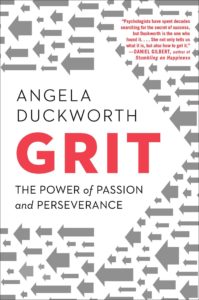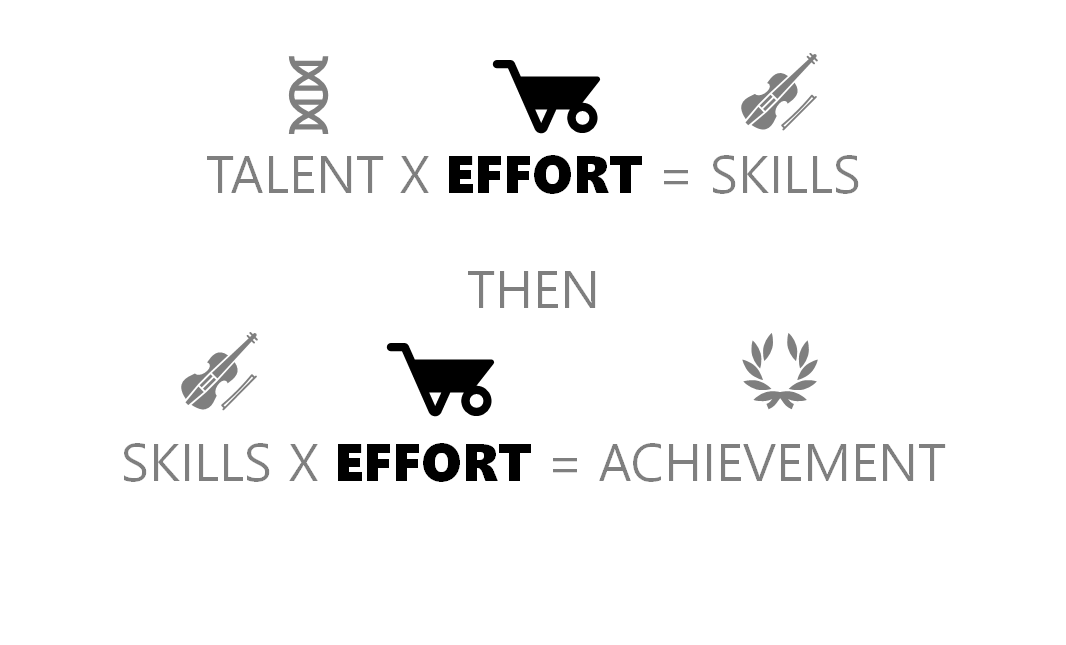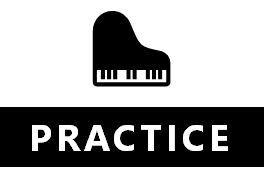Continuing our Northern Review series, Niall Crozier summarises Angela Duckworth’s book about the factors that determine achievement.
I don’t have the time to read it — what is the book’s main point?
Achievement largely depends on passion and perseverance for long term goals (Grit), rather than innate talent. Grit can be grown, particularly with the right mentor-ship and in the right culture. While we all face limits — not just of talent but of opportunity — more often than we think our limits are self-imposed.
Who is Angela Duckworth anyway?
A Ted Talk speaker, McArthur Genius Award winner, developmental psychologist, and former McKinsey management consultant. Enough said.
What exactly is Grit?
While the brilliance of a high performer may seem magical at first glance, it isn’t. Outstanding achievement is the result of multiple individual feats, requiring many different skills, executed to a very high standard.
Of the two types of factors involved in acquiring and developing those skills, Duckworth argues that innate talent is secondary to what she terms Grit.
Natural talent dictates the speed with which skills can be learned when effort is applied. However, that effort counts twice, first during learning where talent becomes skills, and then the application of those skills to achieve things. It’s that effort, and the motivation that drives people to apply it consistently over long periods of time, which is the subject of Duckworth’s work. Grit is about passion as well as perseverance; not just determined effort, but a consistent sustained pursuit of a higher goal, beyond mere temporary enthusiasm.
Duckworth examines a series of contexts where Grit is a better determinant of achievement than talent — ranging from elite military training academies and sales, to competitive swimming and teaching in Chicago public schools.
Great… can I do anything about it?
Yes. While all human traits are influenced by both genes and experience, studies show perseverance is 37% heritable and passion 20%. Therefore Grit can grow — but how? Five areas are examined in the book:
The first aspect of growing grit, is having a ‘top level’ goal or ‘life philosophy’ to be gritty about. Its pursuit — never mind its attainment — is deeply important, it is a source of motivation under pressure, and most of a gritty person’s actions derive their perceived significance from it.
If you haven’t got a passion like this, you can start by fostering one, identifying clues and exploring what you currently like spending time doing or thinking about, what stirs you emotionally, or what you were passionate about in the past (e.g. as a teenager, when these often emerge for the first time). Finally, as with much of what the book discusses, a mentor can prove invaluable here, observing strengths you may not have noticed or opening doors you may not have known existed.
Once a passion or goal has been settled on, and the fire of initial enthusiasm has dwindled, a new problem presents itself; boredom. Our brains crave novelty — while the initial progress of the beginner is mentally exciting, the slow and steady progress of relative competence is not. Instead of finding something new, in order to enjoy the buzz of being a beginner again, Duckworth argues for resisting this, and deepening passion by finding novelty in the nuance of our chosen field and exploring new areas within our overall interest, that will ultimately propel us toward, rather than distracting us from our goal. The myth that falling in love with a career (or anything else), should be sudden and swift, is illusory. Like romantic partners, unrealistic expectations prevent people from developing serious career interests.
You can’t (successfully) have a long-term passion for everything. Prioritising your goals according to their coherence with your overall objective, and pruning as far as possible those that are at odds with it, or do not support delivering it. Clearly some top level goals will clash — often for working parents for example — but the more unified and coordinated the goal hierarchy the better.
This second element of Grit is the discipline of focusing on some narrow aspect of weakness in your current skill-set, breaking its components down, and clearly defining an ‘over-extending’ goal in relation to it, improving each small aspect in turn.
This deliberate practice is an individual — not a team — pursuit, where immediate feedback is sought, reflected on and responded to as part of further repetition to refine the skill being focused on. The quality of time spent practicing, rather than merely the quantity, is vitally important.
Finally, while the concept of ‘flow’ (the experience of being effortlessly wrapped up in the execution of a task at which you are an expert) is different from deliberate practice, it is not at odds with it. Grittier adults experience more flow not less (and do more deliberate practice). Flow is spontaneous, where challenge and skill are evenly balanced, and is an effortless experience of performance. On the other hand, deliberate practice is very carefully planned, is an activity where challenge exceeds skill, is deeply effortful, and is a behaviour for preparation.
The third element of grit is having purpose, a conviction that your ultimate goal matters.
Purpose is subjective. ‘The Parable of the Three Bricklayers’ is used by Duckworth illustrate this point. Three men, doing the same job are asked what their occupation is — one says ‘laying bricks’, the next ‘building a church’, the third says ‘building the house of God’. The first has a job, the second has a career, and the third a purpose. While they have the same job, their subjective experience is different — their perception of it being purposeful is what matters.
It is common to start with relatively self-oriented interest, learn disciplined deliberate practice, and then integrate it with an intention to contribute to the well-being of others.
The following can help develop ‘purpose’:
- Reflecting on how the work you’re already doing can make a positive contribution to society,
- Thinking about how in small meaningful ways you can change your curren work to enhance its connection to your core values — job crafting,
- Finding inspiration in a purposeful role model.
The fourth and final aspect of Grit is unhelpfully named ‘hope’. Duckworth goes on to label this ‘growth mindset’ as the ‘expectation that our own efforts can improve our future’ rather than feeling helpless or fatalistic. This is about learning to interpret failure as a cue to try harder rather than seeing it as confirmation of a permanent lack of ability. Experiencing mastery and adversity at same time wires your brain to think it can master challenges. The brain changes shape as it struggles to master new challenges, like a muscle that gets stronger with use.
Gritty people see suffering as temporary and search for its specific causes. In turn, this perseverance and seeking out new challenges makes them even stronger. Duckworth draws on resilience experiments with animals to show that experiencing suffering, where the subject can influence it, strengthens them for the long term.
Developing this growth mindset involves:
- Updating your beliefs about how your abilities are not fixed (these can even exist due to success which has not required effort, resulting in fragility when set-backs do materialise),
- Practicing optimistic self-talk, training your mind to be resilient with ‘preventative Cognitive Behavioural Therapy (CBT)’, learning to interpret what happens to us and responding as an optimist would (‘I can influence this’, not ‘this outcome is fixed’) and getting a helpful perspective,
- Asking a mentor for a helping hand (the language of those around you is important — feedback should be in relation to effort not talent).
This aspect of grit is summed up by Henry Ford’s famous quote — ‘whether you think you can or you can’t, you’re right’.
5. Context
The final chapters of Grit are given over to various contexts in which grit can be promoted — education, parenting, extra-curricular activities, the workplace, sports, and so on.
In summary, those who help gritty people develop are:
- Both demanding and supportive (‘tough love’),
- Selfless,
- Know the extent of the subject’s comfort zone and manufacture solutions slightly outside it,
- Set boundaries and give freedom.
This is most potent in gritty contexts, where relentless communication has gone into creating a (developmental, not attritional) culture whose shared identity, vision, norms and lived values are based on disciplined perseverance. If you want to get grittier, commit to being part of a gritty culture; where perseverance is what everyone does, it is easier.
Often how we act is not logical. Rationally weighing our options based on their contribution to our long term goals can be overridden by our emotions in the moment. Therefore, having your goals as part of your identity and culture is very helpful — choices are then about ‘what does someone like me do in this scenario’?
In gritty cultures the ‘social multiplier effect’ applies — where excellence from some members gives others around them the opportunity to learn, and drives them to compete. The resulting excellence in turn enriches the learning environment for everyone, as the standard-bearers are pushed harder in response.
Any caveats?
While grittier people are more likely to enjoy a healthy emotional life, even the author admits Grit isn’t everything.
Other things are important — like morality! Character is plural. While intrapersonal character includes self management skills, grit, and self-control over temptation, this is distinct from interpersonal character — gratitude, social intelligence, self control over anger — and intellectual character — curiosity and zest.
Finally, it’s important to balance Grit with knowing when to quit; there is an opportunity cost of expending lots of passion and effort doing the wrong things.
I get the idea. Are there any other pearls of wisdom in there I could adopt in my own career or business?
- An anecdote of Warren Buffet giving one of his staff career advice is referenced — he suggests listing 25 goals, picking the top five, and ruthlessly avoiding the others, as they are your biggest distractions. The book develops this exercise further, recommending the creation of a hierarchy of goals, from the highest level to the most tangible, removing those which are distractions, blending others to make them more coherent with the ultimate goal, and modifying the top level goal where it isn’t addressing related things that a person is deeply passionate about.
- A variation of Bill Gates’ test of Microsoft job candidates’ perseverance may be useful, where he set hours of tedious troubleshooting of code, testing their ability to focus and apply effort at a problem, rather than outright talent,
- From a writer’s perspective, Benjamin Franklin’s method of deliberate practice takes some beating; he converted prose to poetry and back againto repeatedly refine his skills,
- The Duckworth family’s ‘One hard thing rule’ is worth a mention — everyone in the household does ‘a hard (extracurricular) thing’, requiring deliberate practice, which can be quit… but not until a natural stopping point,
- Finally, a neat rule of thumb for selecting senior members of your team — ‘Would I let my kids work for them?’ and ‘Would I let them run the business without me?’
Worth a read?
This is probably one of the business books I most wish I’d read as a teenager. It simultaneously chimes with the no-nonsense mindsets of the war-era generation of my family, while offering a compass for navigating the overwhelming level of choice in today’s society.
 Grit: The Power of Passion and Perseverance (2016) is published by Scribner Book Company.
Grit: The Power of Passion and Perseverance (2016) is published by Scribner Book Company.
- The Power of Habit (Charles Duhigg)
- Delivering Happiness (Tony Hsieh)
- The 7 Habits of Highly Effective People (Stephen R Covey)







